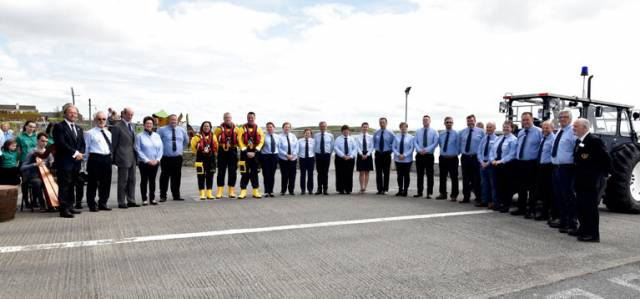The Duke of Kent visited Kilrush RNLI yesterday afternoon as part of a two-day tour of lifeboat stations in Tipperary, Clare and Kerry. The Duke has been President of the RNLI since 1969.
The Duke of Kent arrived at Kilrush Lifeboat Station shortly after 03:00pm, where His Royal Highness was greeted by the volunteer lifeboat operations team, lifeboat crew members and the local fundraising branch.
As part of the visit, Kilrush RNLI showcased local Irish dancing, the Irish Whale & Dolphin Group, handcrafted traditional Irish Currach building, and a selection of local pottery from the Brothers of Charity. Also, in attendance were representatives from Kilrush GAA which focused on the partnership between the GAA and RNLI working together to prevent drowning.
To conclude, a beautiful Irish Yew tree was planted at Kilrush lifeboat station to honour the visit, followed by a brief launch and recovery of Kilrush RNLI’s Atlantic 85 lifeboat.
Commenting on the event, Pauline Dunleavy, Kilrush Lifeboat Operations Manager said: ‘It was an honour to welcome His Royal Highness to Kilrush lifeboat station. We are very proud of our station delighted to host the President of the RNLI. We showcased our great team, as well as great community spirit. In particular, I would like to thank Kilrush GAA for attending. Much like a lifeboat station, a GAA club is at the heart of community life, and through this partnership we all can both play a major role in preventing deaths by drowning.”































































